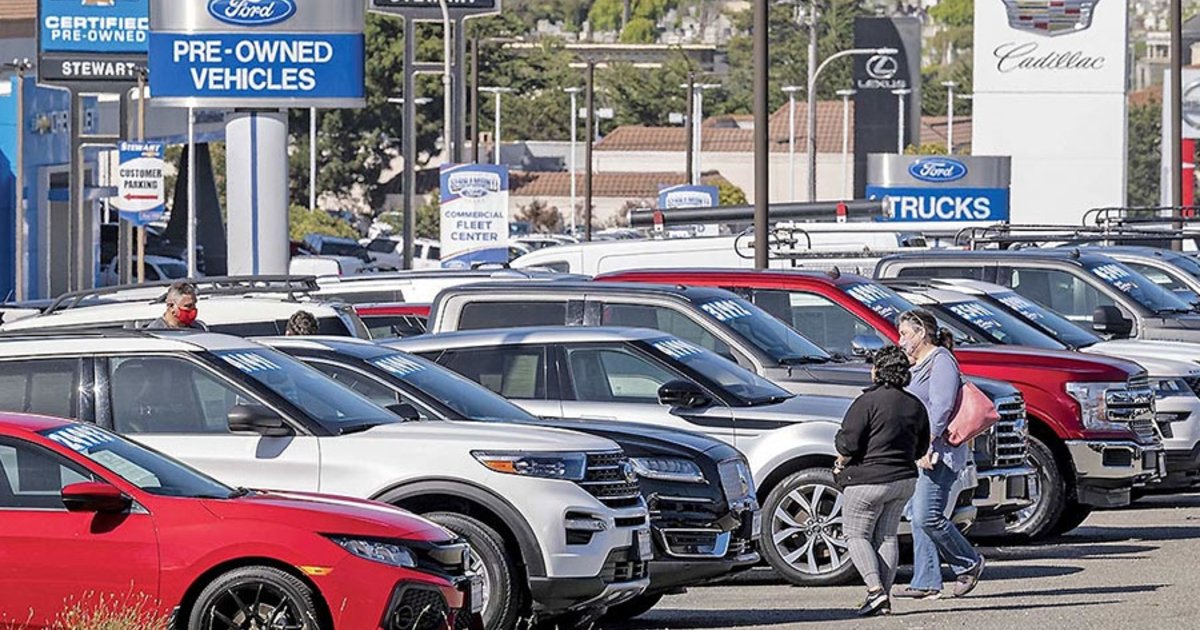
U.S. light-vehicle sales remain in low gear as the third quarter winds down, while slumping consumer sentiment threatens a further downshift.
Cox Automotive on Wednesday, Sept. 28, cut its full-year new-vehicle sales outlook to 13.7 million — down more than 9 percent from 2021 and the industry’s lowest tally in a decade.
It’s the third time this year Cox has lowered its sales forecast, which initially stood at 16 million vehicles.
Most automakers are expected to release third-quarter U.S. sales results early this week.
Charlie Chesbrough, Cox Automotive senior economist, said COVID-related production disruptions and the war in Ukraine scuttled the anticipated improvement in inventories at the start of the year.
Now the industry faces a new wrinkle.
“It seems likely that much of the pent-up demand from limited supply is quickly disappearing as high interest rates eat away at vehicle buyers’ willingness and ability to purchase,” Chesbrough said.
Edmunds predicted third-quarter sales will dip 0.9 percent from the same period a year ago.
Jessica Caldwell, Edmunds’ executive director of insights, said inventory levels should “slowly improve” as microchip and other supply chain shortages ease.
But headwinds such as rising interest rates, inflation and looming economic uncertainty threaten to offset the momentum.
“Consumer confidence could deflate moving forward, but automakers and dealers can at least always count on necessity-based vehicle purchases keeping the industry afloat,” Caldwell said.
S&P Global Mobility analysts expect U.S. light-vehicle sales to be limited to 1.1 million units for September, with the seasonally adjusted annualized rate set to come in at 13.4 million units, up from 12.38 million in September 2021, but well below the 17 million level topped from 2015 to 2019.
J.D. Power and LMC Automotive project total new-vehicle sales in September will reach 1,120,279 units, up 12 percent from a year ago.
“While holiday promotions were nearly nonexistent [this month], modest improvements in vehicle production allowed manufacturers to tap pent-up consumer demand,” J.D. Power data and analytics division chief Thomas King said in a statement.
Last spring, the new-vehicle market began suffering from a significant lack of inventory. Stockpiles have slowly improved but remain well below pre-pandemic levels.
Tight supplies of new cars and light trucks mean sky-high vehicle transaction prices are here to stay.
King expects the average transaction price to reach $45,622, a record for September, and the fourth highest of any month on record.
S&P Global Mobility warns of continued pressure on output.
Joe Langley, the firm’s associate director of U.S. production analysis, said semiconductor shortages coupled with other supply chain and logistics issues will keep U.S. inventory at “below-average levels — under 2 million units or a 40 days’ supply — well into 2023.”
But Cox analysts see the beginnings of a supply recovery.
The firm said new-vehicle inventory jumped 41 percent — or nearly 350,000 vehicles — from last year’s record low. Days’ supply, meanwhile, is up about 50 percent over the period.
Even so, Chesbrough tempers expectations about a full-scale recovery.
“We’re in a long-term trajectory [where] … inventories are going to slowly rebuild,” he said. “But no one is expecting a surge of vehicles being shipped around the country … and getting us back to a 60- or 90-day supply.”
Cox predicted Wednesday, Sept. 28, that General Motors will outsell Toyota Motor North America in the third quarter.
General Motors will lead all automakers with sales of 539,028 vehicles, up 22 percent from a year ago, Cox said.
Despite “extremely tight supplies,” Cox said Toyota will sell 513,846 new vehicles in the third quarter, down 9.2 percent from a year ago.
Ford Motor Co. and Hyundai should see a relatively strong third quarter — up 19 percent and 5.4 percent, respectively, compared with the same quarter last year.
Honda Motor Co. suffered a significant decline in the first three quarters — down 39 percent, Cox estimated.
Meanwhile, Tesla continues to gain on legacy competitors. Third-quarter sales for the EV maker surged 38 percent, driving Tesla’s year-to-date sales 63 percent higher relative to a year ago, Cox projected.